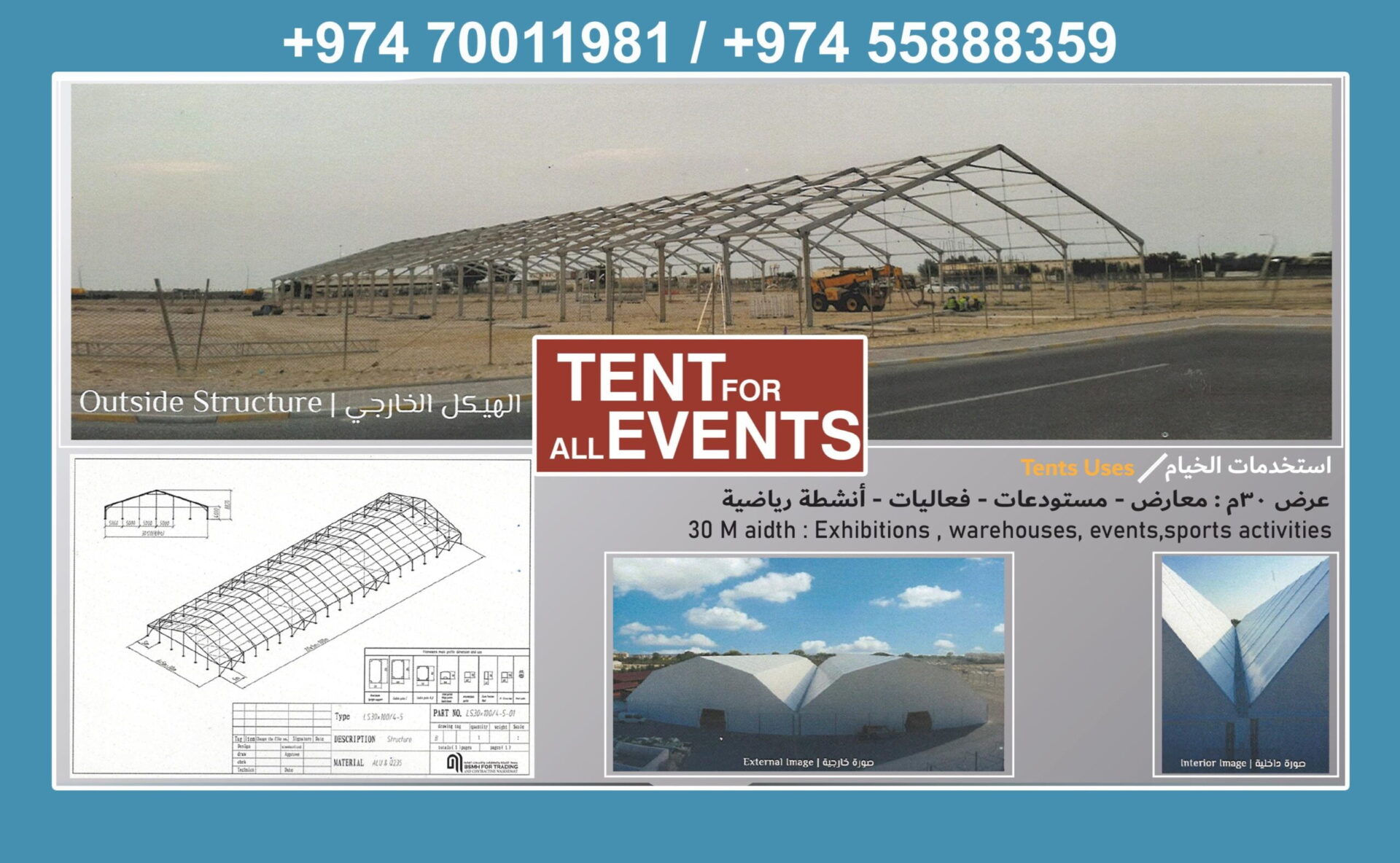How to Install Large Types of Tents for Events?
 Installing large event tents requires careful planning, the right tools, and a systematic approach to ensure safety and stability. Here’s a detailed guide to help you successfully set up large tents for events:
Installing large event tents requires careful planning, the right tools, and a systematic approach to ensure safety and stability. Here’s a detailed guide to help you successfully set up large tents for events:
1. Preparation and Planning
Site Selection and Inspection
– Choose a flat, level area with adequate space for the tent and any additional structures.
– Ensure the site is free from obstacles such as trees, rocks, and underground utilities.
Permits and Regulations
– Check local regulations and obtain necessary permits for tent installation.
– Ensure compliance with fire safety codes and other relevant guidelines.
Tent Size and Type Selection
– Determine the size of the tent based on the number of guests and the type of event.
– Choose the appropriate tent type (e.g., marquee, clear span, frame, pole, sailcloth, pagoda, stretch) based on the event’s aesthetic and functional requirements.
Tools and Equipment
– Gather essential tools and equipment, including stakes, poles, ropes, hammers, ratchets, ladders, and safety gear.
2. Site Preparation
Marking the Area
– Measure and mark the perimeter of the tent using stakes and string to outline the exact footprint.
Ground Preparation
– Clear the area of debris, grass, and any uneven surfaces.
– Lay down ground protection if necessary, such as tarps or flooring, to protect the surface and provide a stable base.
3. Tent Assembly
Unpacking and Sorting
– Unpack all tent components and sort them by type (poles, fabric, stakes, etc.) for easy access during installation.
Setting Up the Frame or Poles
– For frame tents, assemble the metal frame according to the manufacturer’s instructions.
– For pole tents, position the center and side poles in their designated spots.
Securing the Base
– Anchor the base plates of frame tents or the side poles of pole tents to the ground using stakes or weights.
– Ensure that all base points are securely fastened to prevent shifting.
Raising the Tent
– For frame tents, gradually lift the frame, starting with the corners and working your way around.
– For pole tents, raise the center poles first to lift the canopy, followed by the side poles.
Securing the Canopy
– Drape the tent fabric over the frame or poles.
– Secure the fabric to the frame using straps, bungees, or clips.
– Adjust and tighten the fabric to eliminate wrinkles and ensure a taut, smooth surface.
4. Stabilization and Safety
Anchoring
– Use heavy-duty stakes or anchors to secure the tent to the ground, ensuring all corners and sides are firmly anchored.
– For areas where stakes cannot be used, employ water barrels, sandbags, or concrete blocks as weights.
Tensioning
– Properly tension the tent fabric to prevent sagging and ensure stability.
– Use ratchet straps or ropes to tighten the fabric evenly across all sides.
Weatherproofing
– Install sidewalls, if necessary, to protect against wind and rain.
– Ensure proper ventilation and heating/cooling systems are in place for comfort.
5. Final Touches and Inspection
Flooring and Interior Setup
– Install flooring if required, such as plywood, carpets, or interlocking tiles.
– Set up interior elements like lighting, furniture, and décor according to the event plan.
Safety Inspection
– Conduct a thorough inspection of the tent structure, checking for secure connections, taut fabric, and stable anchors.
– Ensure all safety measures are in place, including fire extinguishers and clear exit pathways.
6. Post-Event Takedown
Disassembly
– Carefully remove all interior elements and decorations.
– Reverse the assembly process, starting with the fabric and then the frame or poles.
Packing and Storage
– Clean and dry all tent components before packing to prevent mold and damage.
– Store components in labeled containers for easy identification for future use.
Site Restoration
– Remove all stakes, anchors, and ground protection materials.
– Restore the site to its original condition, removing any debris or remnants of the setup.
Installing large event tents is a complex but manageable task with the right preparation and execution. By following these detailed steps, you can ensure a safe, stable, and aesthetically pleasing setup for any event. Whether you’re hosting a wedding, corporate function, or festival, the right tent installation will provide a reliable and impressive venue for your guests.

